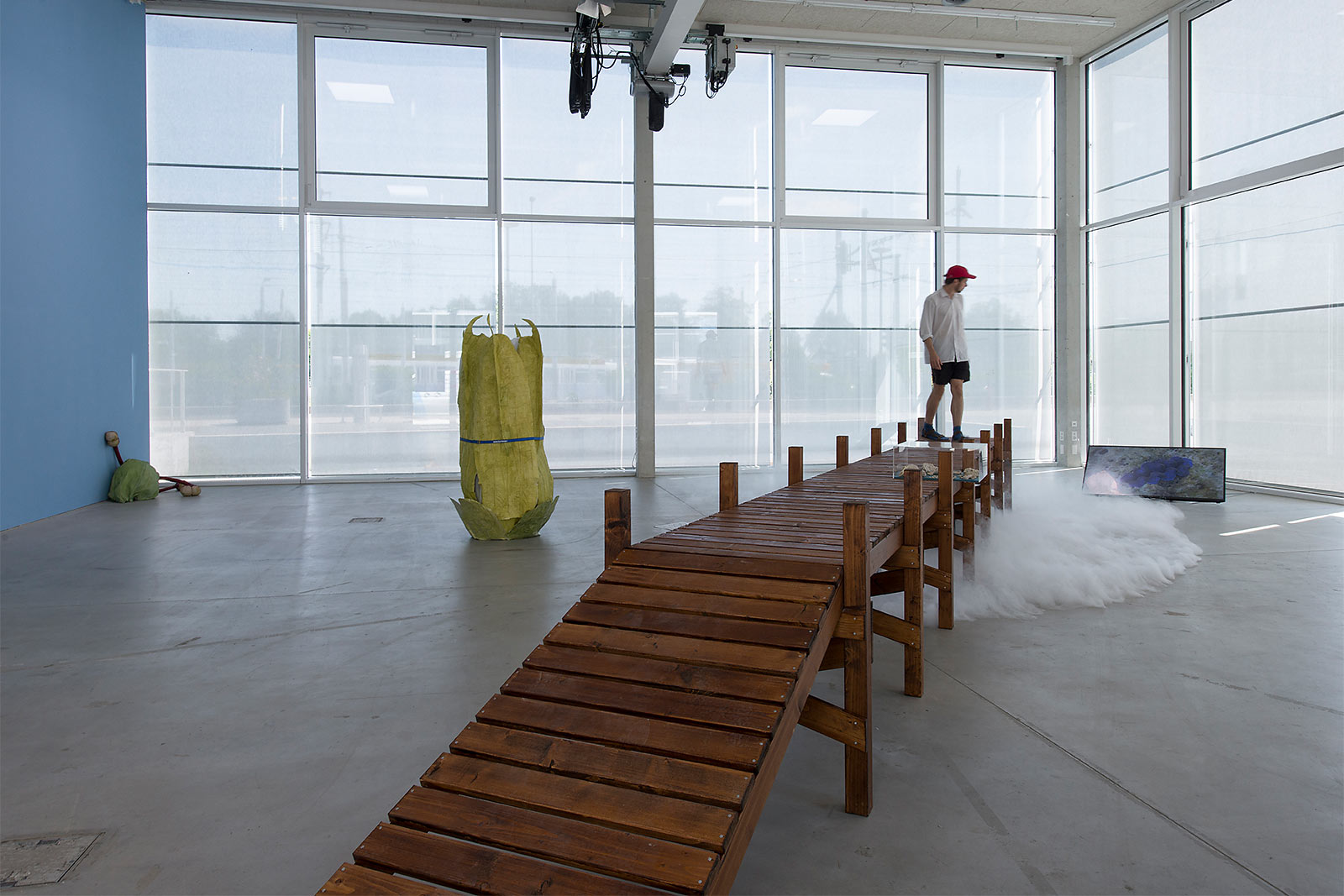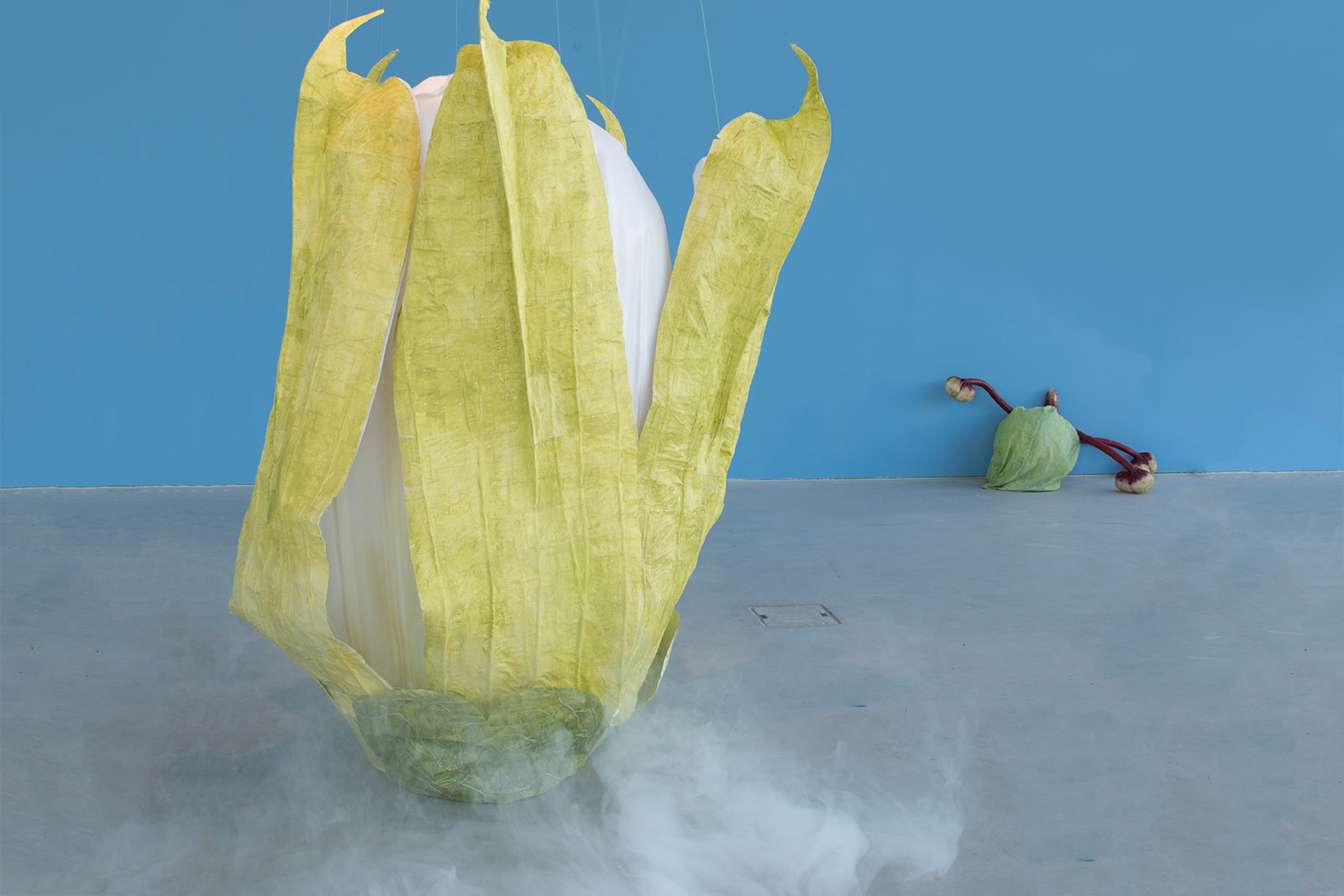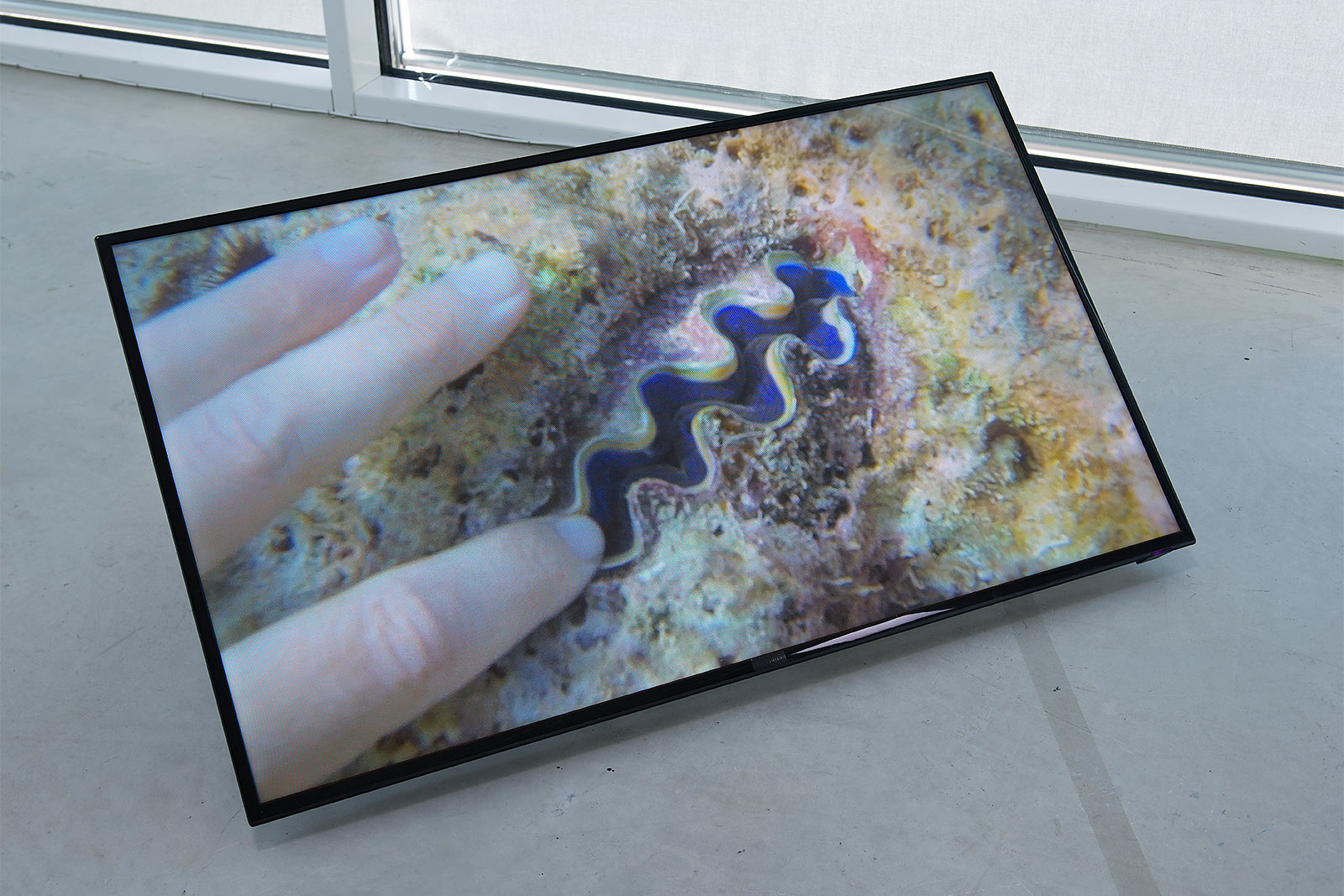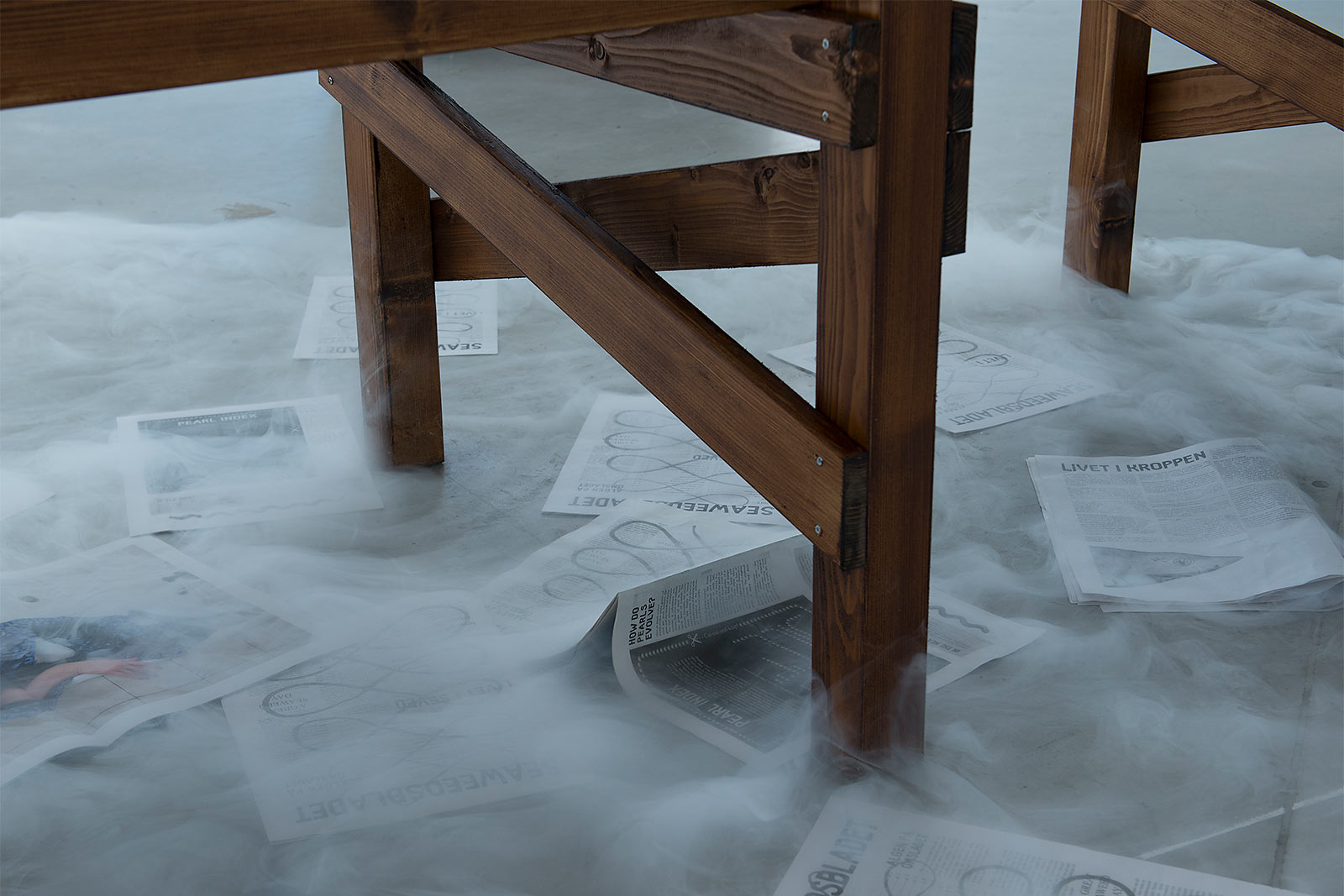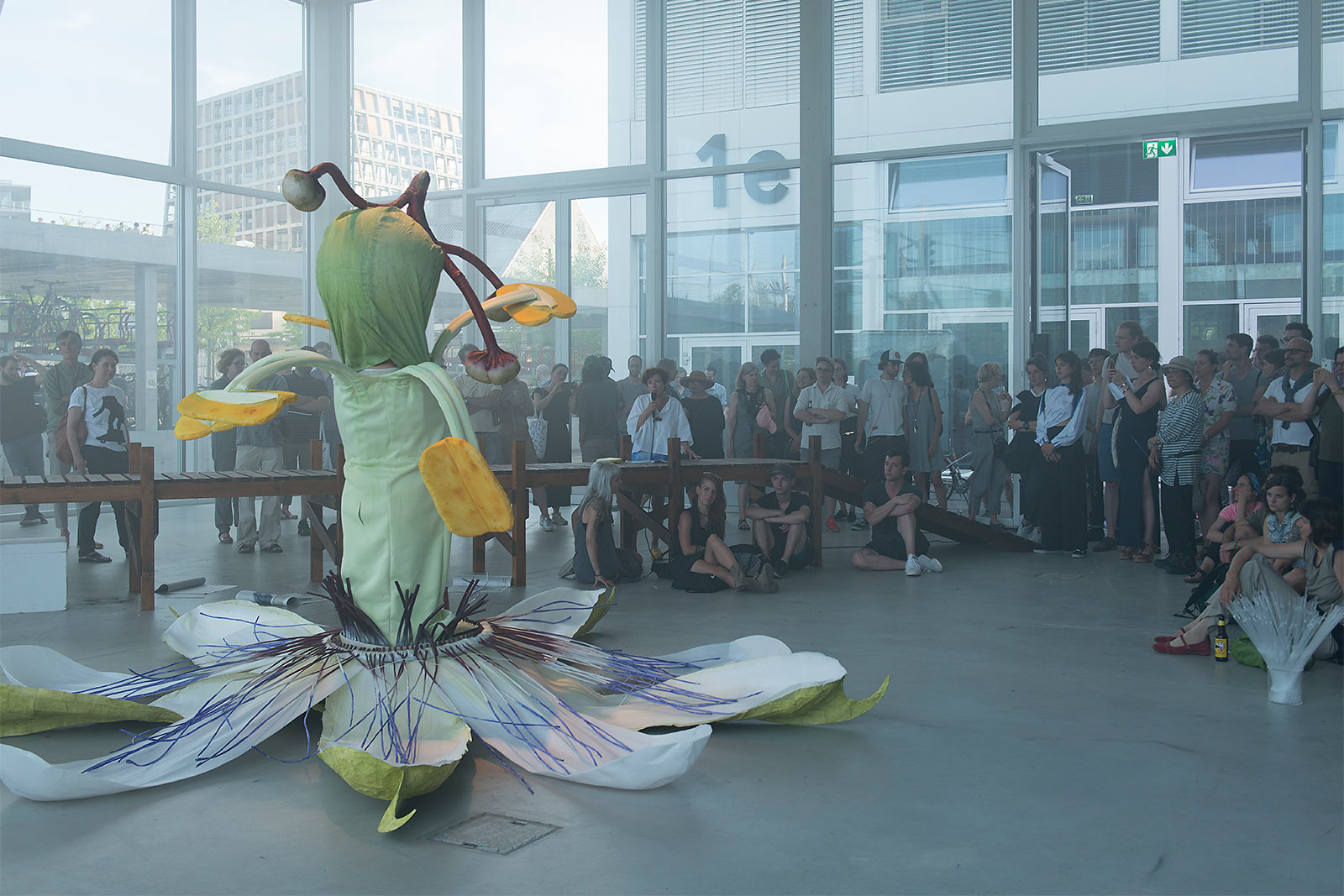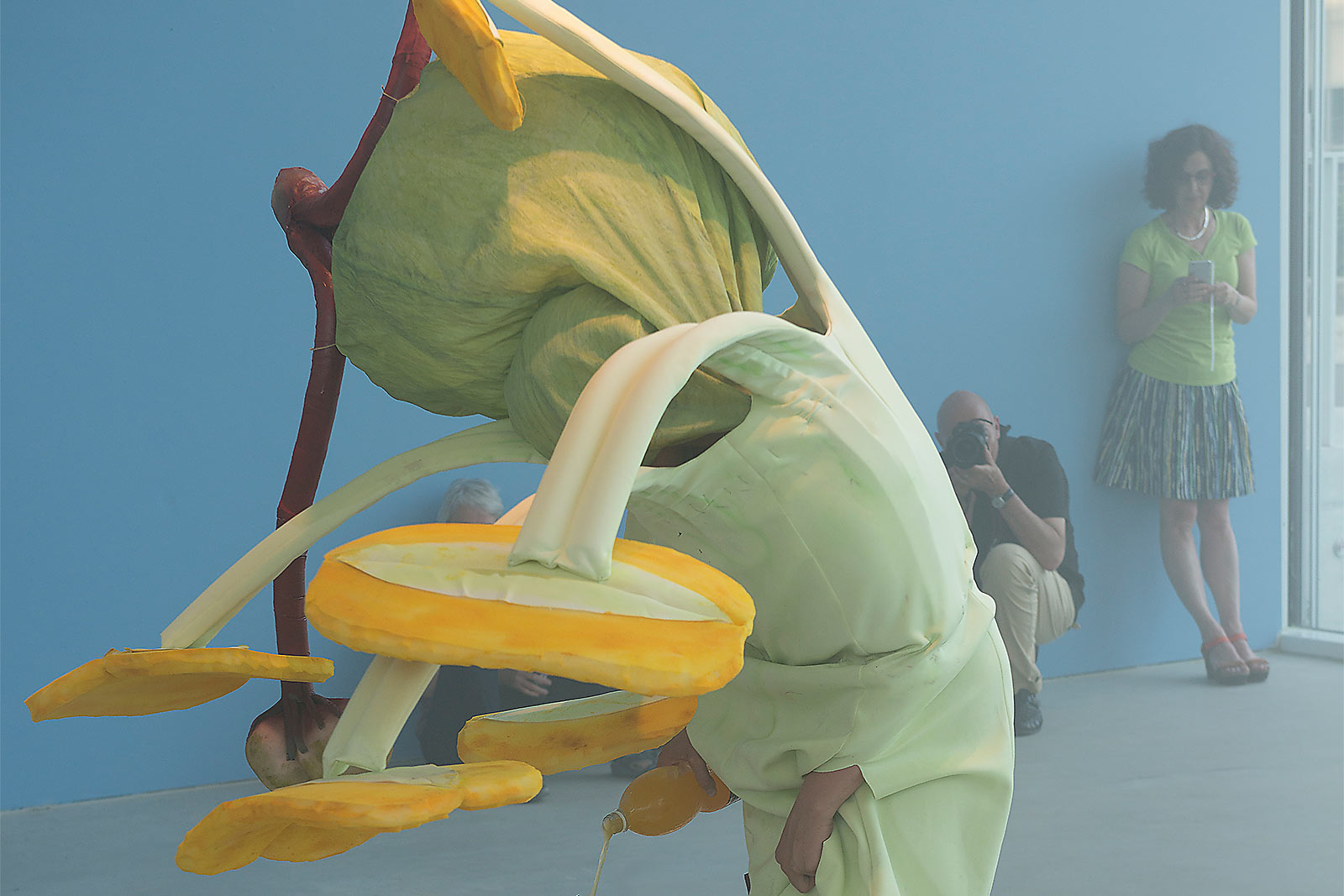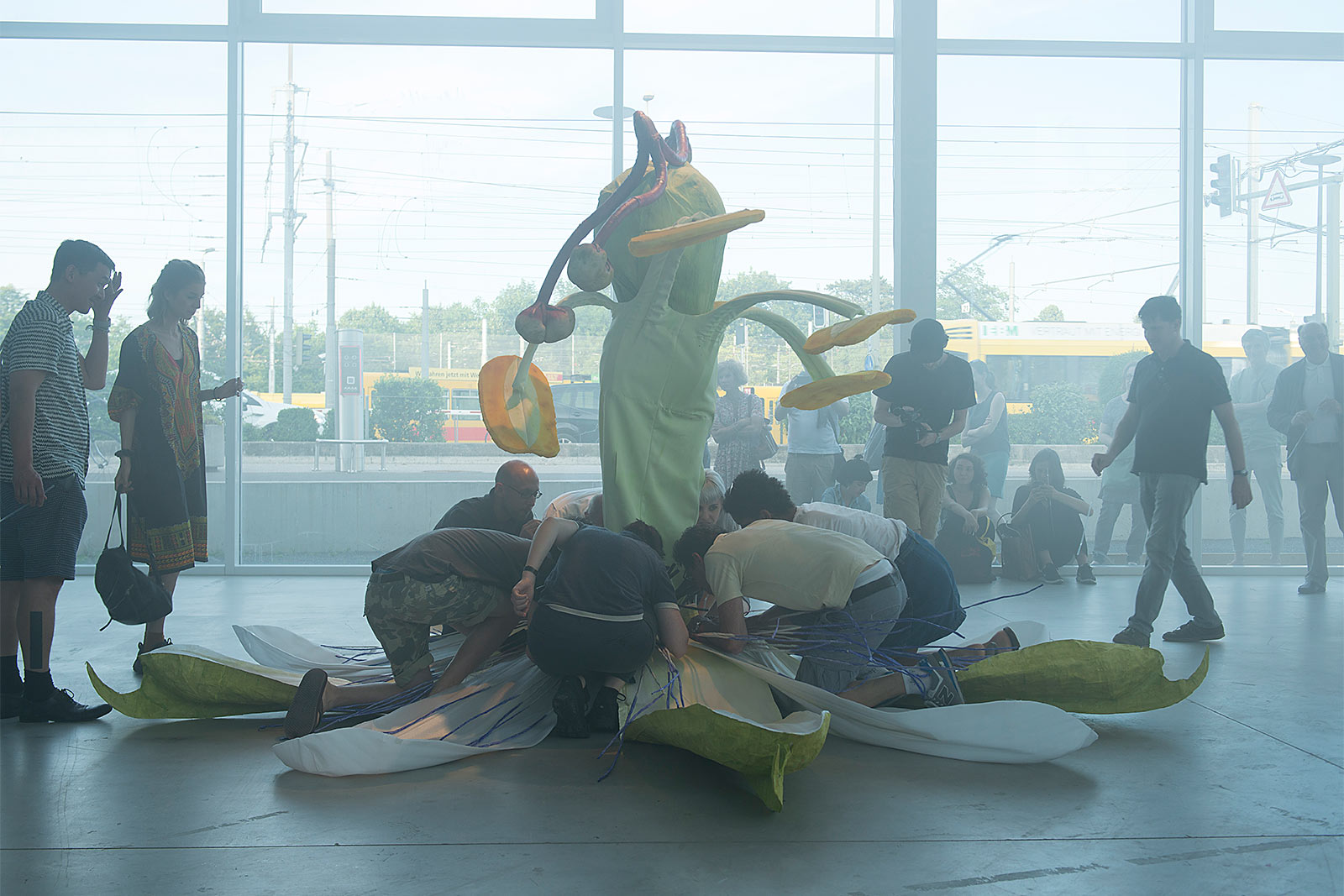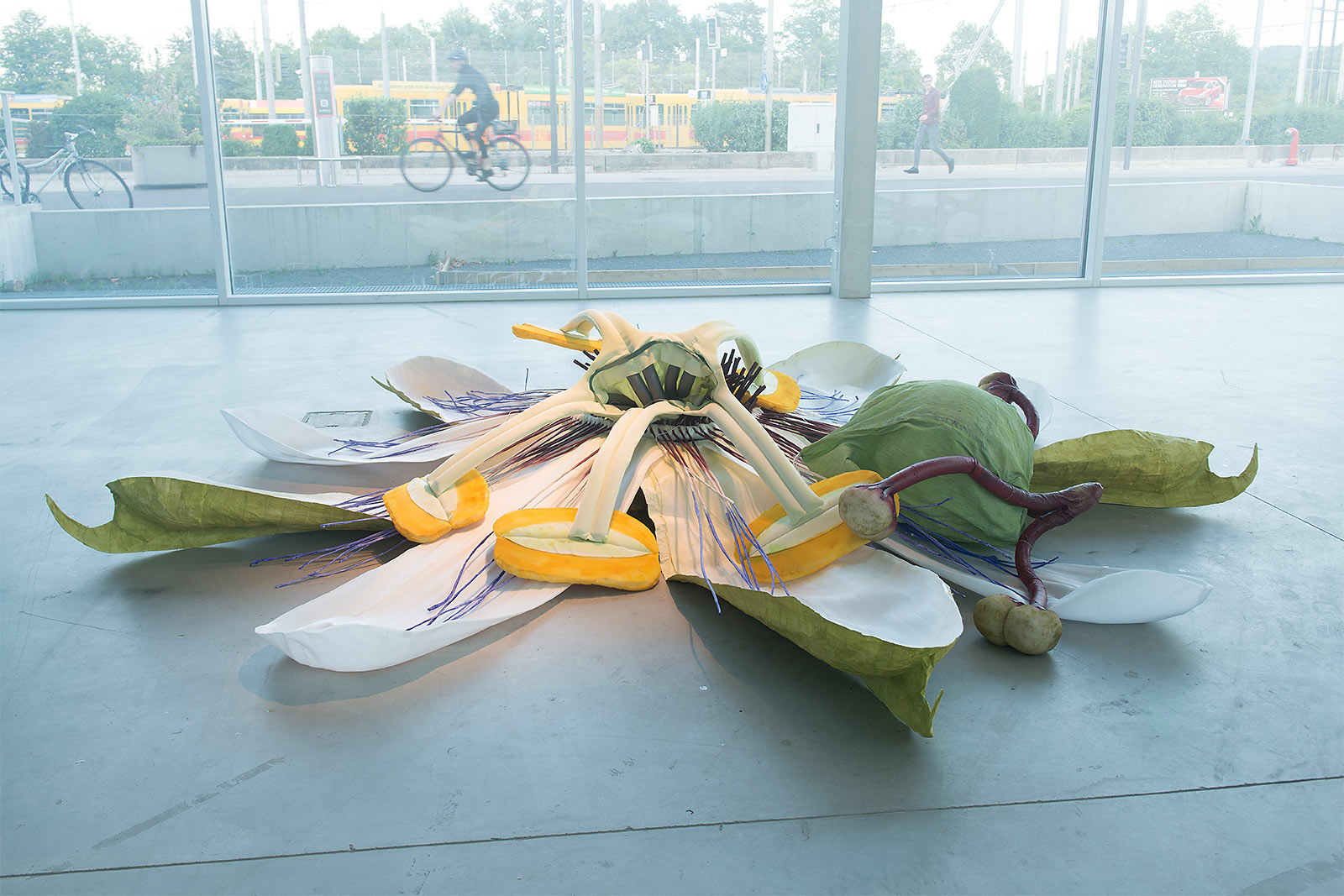The Commissions
Ingela Ihrman
The Inner Ocean
13 – 22 June, 2017
Opening Reception with a performance by Ingela Ihrman
Curated by Chus Martínez
Curatorial assistant Simon Würsten
Supported by the NA! Fund
The claim that humans are animals that are different from all the others was first expressed by Aristotle. He formulated his definition of humans as «living beings possessing language» (zōon logon echon), which later, in the passage from Greek to Latin, acquired the classic form animal rationale. But Aristotle’s definition was clearly in contrast with, or in reaction to, his predecessors’, from Homer to Empedocles, Parmenides, or Democritus, who could all care less about discussing the differences between the various faculties of animals, humans included. Ascribing an intellectual power to all animals and plants introduces very interesting new twists on the relation between thinking and perceiving. For many, all these ideas, all these experiments conducted by thinkers, or by artists proposing to be an animal or a plant, are still too extravagant, and apprehensive about leaving behind political truths as the left understands them, as matters of human awareness and interest.
For centuries, language and labor defined the position of human. How can we leave that position to become a flower? A passion flower, even? But Ingela Ihrman proposes to reverse this commonsense, the cultural personality of the passion flower as unnecessarily humanized by the 17th century Spanish priests who named it in South America. In calling the flower «La Flor de las Cinco Llagas», or the «The Flower With The Five Wounds», referring to Christ’s suffering, his Passion, they inserted it into the logical model of transcendence, of the dialectical suppuration of earthly senses by a suffering that transforms pain into glory. So it seems to be a really good idea to go inside the flower, and not only observe it or direct it, but try to reverse that logic and return it to a plane of immanence, to the order of life. True, we cannot perform this operation with every single animal and plant, with every single living creature, including humans, but it is an incredible proposal to introduce into our imagination, to persuade us that we should and may do such a thing.
As part of our commissioned series at der TANK, we present a new work by artist Ingela Ihrman: a wearable replica of a blue passion flower (Passiflora caerulea); copies of her newspaper Seaweedsbladet (The seaweed leaflet), which will later be distributed to all households in the residential area of Seved in Malmö, Sweden, where she lives and works; a video, a collage of underwater recordings made at Neil Island, India; a fossil collection from Scania gathered by hobbyists; and a fog machine.
We invite all of you to come and see the flower. The bud will be on view beginning June 3, but it will remain closed until June 13, and on that day, it will bloom, and we’ll not only celebrate the flower and the work of the artist, but also test the notion that perception occurs by means of slight mutation, in which the sensing body acquires something of the nature of that which it senses. For in such terms one cannot account for the entire structure of sensation as the perception of «a passion». Sensing like a flower, in other words, can be seen as the result of a fundamental and necessary transformation: one being altering the consistency of another. The left call it «tolerance», but that is an insufficient term. The flower shows us we need more than just «allowings, and in that more is the true seed of future forms of democracy.
The Inner Ocean is made possible by the generous support of Nature Addicts Fund – Francewithin the frame of an ongoing collaboration with the Art Institute. This commissions program started one year ago with French artist Mathilde Rosier and marks the common interest of both institutions for the way art and artists shape our vision of nature.
Ingela Ihrman (b. 1985) is an artist based in Malmö. Her practice moves freely between performance art, installations, and writing. Costumes and staged situations are reoccurring elements in her presentations, bringing creatures into life while i.e. giving birth or blooming. Her work is characterized by tactile craft techniques, hobbyism and poetic absurdism and borrows from amateur theatre as well as from science. Limiting norms, notions like loneliness and belonging, and relations between different life forms are discussed within her work.
Recent exhibitions include Future Flourish at Tensta Konsthall (2016) and Tropikerna i Gnesta, Art Lab Gnesta (2013). She participated in the 11th Gwangju Biennale, The Eighth Climate (What does art do?) (2016); Survival K(n)it 7, Latvian Centre for Contemporary Art, Riga (2015) and Becoming by Recalling, Passagen Konsthall (2015). In 2016 she did a field based residency at the Andaman Islands, India, within Art Lab Gensta's investigation Swamp Storytelling. Since 2009 she forms the group Hägerstens Botaniska Trädgård with Sofia Hultin and Johan Eriksson, creating low-key performances about the strong emotions of everyday life.
Photos: Claude Barrault

